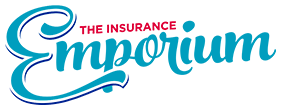Whether you’re an experienced equestrian or a novice horse rider, it may surprise you to know that there are over 400 different types of horse breeds across the world – having been domesticated by humans for thousands of years.
As you can imagine, every horse is unique as our beloved equine friends all come in different sizes, shapes, and colours. While not every horse shares the same characteristics, certain breeds are bred to fulfil certain roles which helps to identify which breed is suitable for your personal needs.
Therefore, when looking at horse breeds, they’ll typically fall under the following categories:
- Draft Horses – These types of horses fall under the heavy horse category, they include Clydesdale, Shire, Breton, and Boulonnais. These working horses are historically known for their farm work or carrying soldiers in battles, bred to carry heavy loads they can pull twice their weight.
- Light Types – This category of horses has a diverse range of weight and height and is renowned for being excellent riding horses, bred for speed, endurance, and agility. Examples of the breed include Arabian, American Quarter Horse, Thoroughbred, and Appaloosa.
- Gaited Types – Known for their ability to move smoothly and gracefully, these types of horses are ideal for long-distance travel thanks to their stamina and endurance. Breeds found under this category include American Saddlebred, Icelandic Horse, and Campeiro.
- Warm Blood Types – These horses are a combination of hot- and cold-blooded horses, producing a typically tall, strong, and athletic horse as a result. They are often associated with the type of horses you might see competing at the Olympic equestrian events. Dutch Warmblood, Groninger, Cleveland Bay, and Holsteiner are examples of warm-blood breeds.
- Pony Types – Ponies are typically horses that are under 14.2 hands high, or approximately 4.5 feet tall. With many of the same characteristics as larger horses, ponies were bred for similar activities however, in modern times they have become ideal riding companions for not only small children but adults too. Breeds such as Shetlands Pony, New Forest Pony, and Exmoor Pony all fall under this category.
Five Common Horse Breeds
With hundreds of breeds to choose from, when it comes to selecting a horse it’s important to select one that’s right for you. Therefore, we’ve put together our list of five common horse breeds, to help guide you when looking at which breed may suit your needs.

Beginners: American Quarter Horse
The American Quarter Horse is well respected by novice and professional riders alike, and due to their generally calm, quiet, and passive nature, these equines can be an excellent choice for beginners*. While you may be tempted to go for a younger horse so you can watch them grow and progress, novices might be more suited to an older, trained horse, that may be calmer and better behaved than their younger counterparts. Always meet your horse and take a test ride, if possible, to ensure you and your new equine friend are both comfortable with each other.
- Looks: Short head, muscular neck, short body with powerful shoulders and hindquarters and strong legs.
- Characteristics: Calm, intelligent and good for training.
- Key Attribute: Strong and agile.
- Job: General riding, rodeos, and polo.

Children: New Forest Pony
We could have chosen several different ponies for this list, including Shetlands and Welsh Ponies. But the New Forest Pony won out for one simple reason; they can be ridden by adults too! New Forest Ponies are both large enough for many adults to ride and small enough to not be too intimidating for younger riders. Their versatile size makes them the ideal pony for your child to grow up with.^ While they can be docile and friendly,* it’s exceptionally important to find a horse that’s well trained for younger riders, to minimise any risk of injury.
- Looks: Long head, short neck, sloping shoulders, short back, and strong hindquarters.
- Characteristics: Intelligent, willing, docile, and friendly.
- Key Attribute: Hardy and has a straight action.
- Job: Riding all-rounders including pony & riding clubs, showing, hunting, jumping and dressage ponies.

Endurance: Arabain Horse
If you’re looking for a horse to compete in endurance events, your best bet might just be an Arabian. Their conformation makes Arabian horses ideal for endurance riding as, even though they are strong, they still have a relatively light frame. When taking part in endurance events, you’ll need a horse with a good temperament and the will to keep going when conditions get tough.* An Arabian could fit the bill perfectly.
- Looks: Chiselled head, dished face and long neck.
- Characteristics: Known for their ‘floating trot’.
- Key Attribute: Stamina and endurance over distance.
- Job: Often used in endurance riding

Dressage: Andalusian
Throughout history, Andalusian horses have been well known for their use in classical dressage, and still enjoy huge success in the event today. Known by some as the original dressage mount, Andalusians are renowned for their temperament, known to be smart, docile, and brave.* These horses are particularly suited to more advanced dressage movements, especially airs above the ground. Andalusians aren’t only used in dressage though, and are suited to a wide range of tasks, like jumping, mounted athletics and general riding.
- Looks: A long head with a broad forehead and convex profile, long arched neck, with an abundant mane.
- Characteristics: Intelligent, docile, and calm.
- Key Attribute: They have a high knee action and are short-striding.
- Job: Competing in dressage.

Racing: Thoroughbred
Unsuitable for inexperienced riders, Thoroughbreds are one of the strongest, boldest horse breeds available.* There’s a reason they’re the most popular breed of racing horses! It takes an experienced rider with enough confidence and knowledge to channel the high energy of a Thoroughbred. But if you’re experienced and ready to take on the challenge, you may enjoy a strong ride with one of the most powerful breeds of horse.
- Looks: Deep chest, lean body and long, flat muscles.
- Characteristics: Known to be spirited and not for beginners
- Key Attribute: Fast, powerful, and energetic.
- Job: Used for eventing.
While this is by no means an exhaustive list of horse breeds, we hope it acts as a starting point on your journey to horse ownership.
Despite their majestic demeanour horses are still animals, and despite some breeds being renowned for certain characteristics, every horse is different. You can’t guarantee a horse’s temperament solely from its breed, therefore it’s always worthwhile making arrangements to meet your new four-legged friend to make sure they’re going to meet your needs.
As with any high-value item purchase, when buying a horse, it doesn’t come without risks, therefore, it’s also worth considering equine insurance. Here at The Insurance Emporium, we have several products owners may want to consider including Horse Insurance and Veteran Horse Insurance, Horse Rider Insurance, Horse Trailer Insurance and Trailer Hire Insurance. With different levels of cover you can take the reins and tailor the cover to suit your needs.
* Horse Insurance from The Insurance Emporium may exclude cover for public liability claims arising from the actions of your horse if it is known to have vicious tendencies or behavioural problems unless we have been told about this and have accepted it in writing.
^ The Insurance Emporium provide cover for horse riders from the age of 5 years old.
All content provided on this blog is for informational purposes only. We make no representations as to the accuracy or completeness of any information on this site or found by following any link on this site. We will not be liable for any errors or omissions in this information nor for the availability of this information. We will not be liable for any loss, injury, or damage arising from the display or use of this information. This policy is subject to change at any time.
We offer a variety of cover levels, so please check the policy cover suits your needs before purchasing. For your protection, please ensure you read the Insurance Product Information Document (IPID) and policy wording, for information on policy exclusions and limitations.


